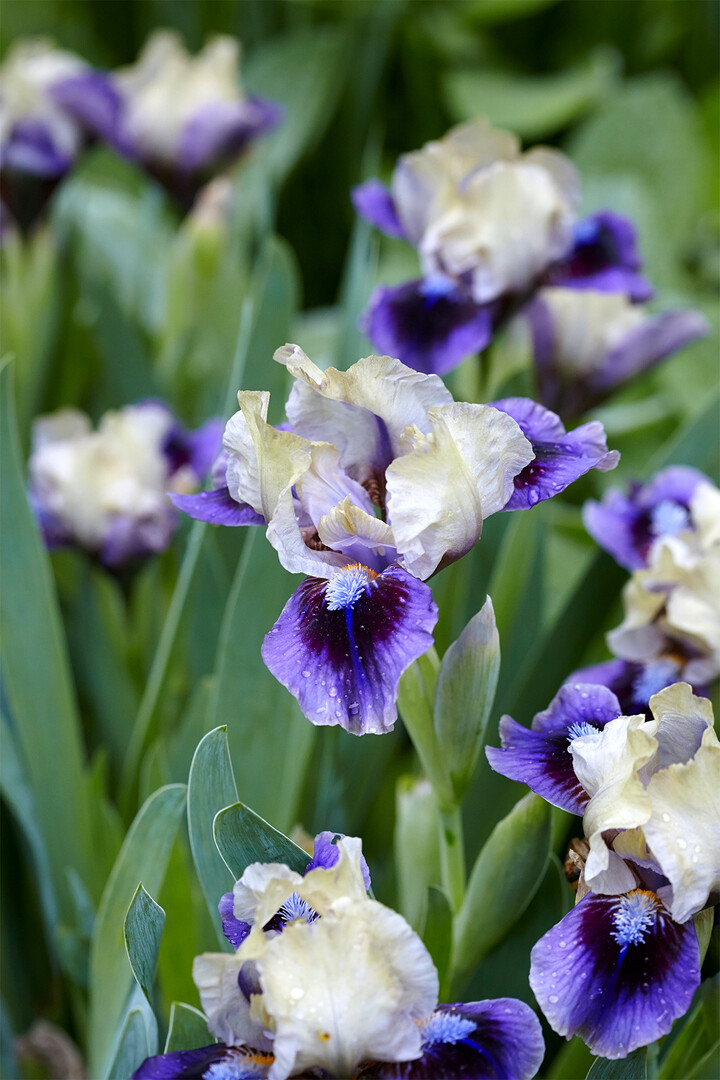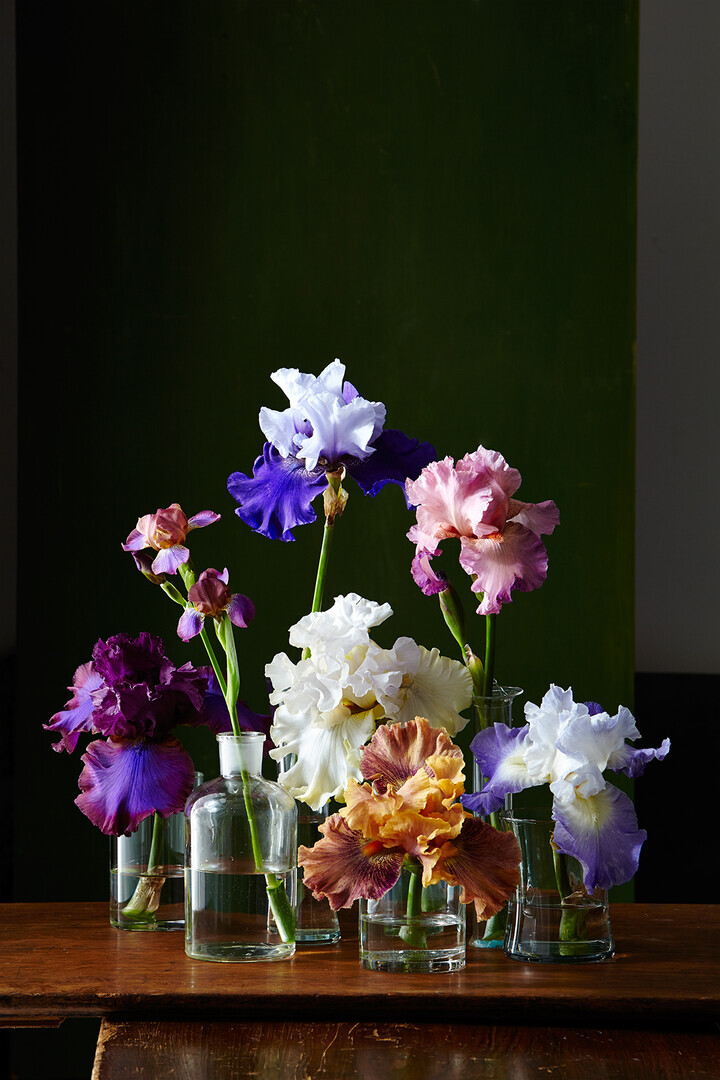Who would have thought that a flower with a beard could be considered a beautiful addition to the garden. You won't find a flower with more variety and color than irises. Irises are often considered spring bulbs, but some of the thousands of iris varieties bloom in summer and fall, too.
One distinctive feature of irises is their lance-shaped, spiky foliage—the blooms are often confused with lilies, but the foliage is a tell-tale sign of which plant you’re looking at. Irises are perennials that easily self-multiply and can be divided, meaning you can plant more irises in your garden for free each year.

1. Irises Have Been Important Flowers Since the Ancient Greeks
A lot of the iris’s long history traces back to the Greeks. Its name comes from the Greek word for rainbow and messenger. It’s believed that these flowers were named because their blooms come in so many colors of the rainbow. In Greek mythology, the goddess Iris delivered messages to the gods, traveling on rainbows to get from heaven to earth and back. Ancient Greeks would plant irises on the graves of their loved ones in hopes that the goddess Iris would help connect their souls to heaven.
The earliest art that depicts an iris is a fresco in King Minos’ palace on the Greek island of Crete. That palace dates back to 2100 BC.
2. Irises Can Be Bearded Or Beardless
The colorful blooms can be bearded or unbearded and come in solid colors or patterns with dramatic veining. All irises have upright petals and fall petals that hang down below. You can tell a bearded iris from a beardless iris by looking at the center of the fall petals—bearded irises have a fuzzy patch, which is why they are called 'bearded.' Beardless irises may have a patch of color in the same place on the fall petals, but with no fuzzy texture.
3. Parts of the Iris Have Been Used Medicinally
Irises have more of a purpose than just something pretty to look at. Historically, parts of iris plants have been used for medicinal and cosmetic purposes. Besides being a common fragrance added to perfumes, the juice from fresh iris roots was used to remove freckles. The root was blended to create cough syrups and topical treatments for skin conditions like eczema and acne. The seeds were prescribed for digestive problems. With the rise of aromatherapy, the oil from irises is said to help with congestion and boosting mood.

The iris species symbolizes eloquence, which stems from the goddess Iris being a messenger. But within the species, each color also carries its own meaning—keep this symbolism in mind the next time you send someone irises. For example, purple irises represent admiration and wisdom, while blue is a symbol of faith and hope. Yellow irises are said to symbolize passion, and white represents purity.
Related: Find Out Your Birth Month Flower (And Meaning Behind It!)
This bulb has been a part of so many cultures and histories and continues to be a favorite in the garden today. With so many varieties in hundreds of color combinations, you could have a garden full of irises that would be anything but boring. Do your research and find the perfect iris to complete your flower bed.